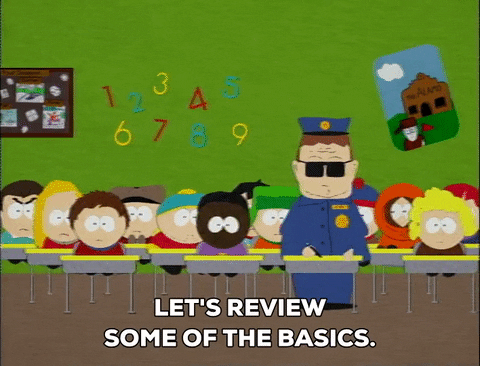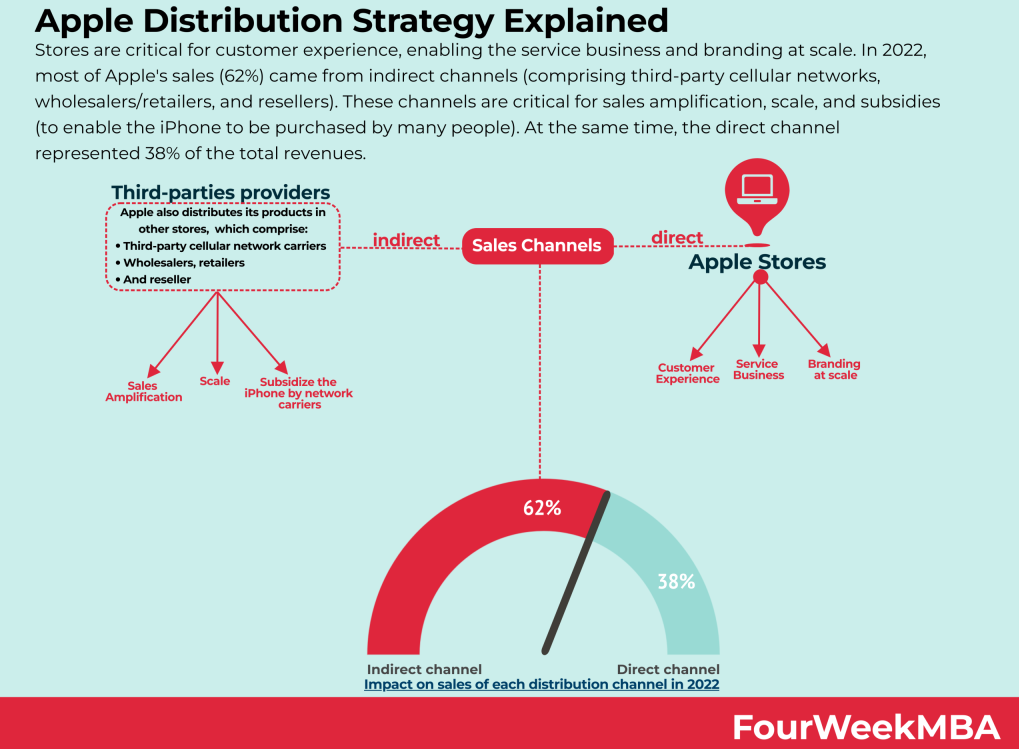You’ve poured your heart, soul, and an immense amount of passion into creating a product you genuinely believe in. You’ve done everything you can, and with every fiber of your being believe it is the best product in its class. You can’t wait to reap the rewards of its success.
However, upon launching your product, the initial response falls immensely short of your expectations. It dawns on you that you’re up against a sea of competitors selling similar products—including renowned brands, emerging startups, and other visionaries who are all vying for the attention of the same audience. You realize that you may have overlooked the importance of devising a well-structured go-to-market plan and a comprehensive product marketing strategy.

If you are struggling to make your product stand out in today’s crowded marketplace, don’t worry—you're among friends. Though tech marketers will unanimously agree that creating engaging content is their top priority, only 46% have a documented content marketing strategy, and only 32% say their company has been "extremely" or "very successful" in 2022.
This disconnect highlights the need for a comprehensive product marketing mix. One that incorporates the 4 P’s: Product, Price, Place, and Promotion.
In this guide, we’ll delve into the importance of each of these elements and provide practical tips on how to make them work together to create your winning product marketing strategy.
Whether you’re launching a new product or looking to revamp your existing marketing efforts, let’s take your marketing game up a notch.
Welcome To Product Marketing 101
You must learn to crawl before you can walk, so let’s start with the basics.

Product Marketing Decoded
Think about a product that you absolutely had to have—like the latest Apple Watch or your freshest pair of sneakers. Well, that’s where product marketing comes in!
Product marketing is about making the Watch or sneakers look awesome and irresistible, so you’ll crave and purchase them.
But product marketing isn’t just that. Customers are smart—they are fully aware and cautious that looks can be deceiving.
It’s also about figuring out who would want to buy and why. It’s about understanding your customers and figuring out how to get them and have them stay excited about what you’re selling.
The Importance of the 4Ps when Developing a Marketing Strategy
So why are the 4Ps for developing a marketing strategy crucial to achieving short and long-term success?
Without them, you'll struggle to:
- Identify your target market
- Communicate your value proposition to them
- Effectively compete in the marketplace
- Generate exponential growth (or revenue, for that matter)
If you don’t know who your target user is,
what they need, or how, where, and when to communicate with them—
then how will you capture their interest and persuade them to buy?
Using the 4Ps to create a well-defined marketing strategy brings countless benefits. According to a 2022 CoSchedule survey, companies with an organized marketing strategy are 674% more likely to report success in their marketing efforts than those without one. That’s like Crypto 2021 Gains numbers right there!
What does success look like? It looks like the following.
Higher brand recognition, engagement, and loyalty
I bet you're a person who needs to trust a brand before buying from them. Why I am so confident? Because 80% of consumers share this sentiment.
This highlights the need to build a strong relationship with customers by providing valuable content and engaging with them regularly.
By doing this, you'll create a community of loyal customers who not only love your product but also advocate for it to others.
Increased competitiveness
A great marketing strategy includes a clear value proposition and a unique selling proposition (USP). They talk about the qualities and benefits that differentiate you from competitors.
Creating and maintaining a strategy like this requires you to understand the market you're operating in, including competitors and their products.
It calls for a profound understanding of your customers’ needs, pain points, and desires, so you can create messaging and marketing campaigns that resonate and build a strong emotional connection.
But consumer behavior changes with the tides, so it also means staying on top of industry trends and changes, which then allows you to adapt quickly and stay ahead of the competition.
Effective resource allocation
Just like product features, marketing efforts have to be prioritized rigorously. You have to go into it assuming that your marketing budget is the last one you'll ever get, so you better make it count.
By developing a marketing strategy, you can prioritize based on your unique goals and objectives. This includes identifying which marketing channels and tactics are most effective for reaching your consumers and driving conversions.
For example, if you have a product targeting younger consumers you may well find that social media and influencer marketing are more effective than traditional print or TV ads.
Greater profitability and growth
A solid marketing strategy helps you increase revenue and profitability over time, attracting new customers, retaining existing ones, and increasing sales.
By identifying and understanding your target customers, you can personalize your marketing efforts and messaging. A staggering 97% of marketers agree, crediting personalization for a rise in business outcomes. Moreover, 72% of consumers say they respond better to marketing messages exclusively tailored to their choices.
Understanding The 4 Ps Of Marketing
At this point, I'm sure you are feeling the adrenaline pumping through your veins and an eagerness to get a taste of some of those sweet sweet benefits!

From my experience, the best way to go about this is by looking at the 4 Ps of marketing. I’ll use Apple to provide an example of each 'P.'
Product
You guessed it—this refers to the actual product you’re offering. You need to ensure that your product meets the needs and wants of your ideal customers, along with the quality, design, features, and packaging. But that's your wheelhouse as a product person, so none of this should be a surprise to you!

Apple’s Product: If there is one thing Apple is known for, it's creating high-quality, innovative products such as the iPhone, iPad, and MacBook. Their products are designed to meet the needs and want of their customer, which includes people who value aesthetics, functionality, and user experience
Price
Price refers to your pricing strategy. You need to set a price that is competitive in the marketplace, while also generating sufficient profit to sustain your operations. Factors that influence pricing include production costs, competition, and target customers.
Apple’s Price: Apple’s pricing strategy is to position its products as premium offerings in the marketplace. While their products are typically more expensive than those of their competitors, they justify the higher price point by offering superior quality, design, and performance.
Place
Place refers to the distribution channels you use to get your product to your target customer. Think about physical stores, online marketplaces, and distribution networks.

Apple’s Place: Apple’s distribution channels include its own physical stores, online marketplaces, and partnerships with authorized retailers. By offering multiple channels, they make it easy to find and buy their products.
Promotion
This refers to the marketing and advertising tactics you use to promote your product in your target market. It includes advertising, sales promotions, segments, and personal selling, to name a few. The goal is to raise brand awareness and generate interest in the product or service.
Apple’s Promotion: Apple focuses on creating a sense of exclusivity and desirability. Their campaigns are sleek and visually stunning showcasing their products’ features and benefits. Additionally, they invest heavily in public relations and influencer marketing to generate buzz around its product launches.
Learn more product marketing secrets from the best in the biz.
Prefer in-person learning? Browse our roundup of the best product marketing conferences happening this year.
Tactics for Establishing Product, Pricing, Place, and Promotion
So, to recap, we've covered:
- What a marketing strategy is
- The benefits of a marketing strategy
- The 4 P’s of a marketing strategy
Still with me? Great! Now it's time to look into how you can establish your tactics for each of them.

Product: Defining Your Product

When we refer to the product, we are talking about the actual item that you’re offering.
If you work in a startup with a marketing function accountable for the go-to-market strategy, product managers are their partners in crime.
Product Managers have the know-how about the product, market trends, competitors, and especially customer needs, in and out.
Ahead of the product development of any functionality on the product roadmap, we are the ones uncovering customer needs, better understanding them, and assessing if and how competitors address them.
We describe who the product (feature) targets, the value proposition, and key functionalities and benefits.
Throughout the product lifecycle, we are the ones who know what works and what doesn’t for customers.
If you're an experienced product manager, go ahead and skip this part. But if you're pretty green in the role as an associate product manager, here's how you can discover the necessary information to define the Product within the marketing mix.
The ideal customers to target
Create a portrait of your ideal customer, describing who they are, what defines them, their pain points, and their unmet needs. The portrait is called a persona. Here are a few templates that you can utilize.
The competitors in play
Understand your competitors and their product. They might already cater to your persona's needs. In these cases, learn from the experience of their existing customers and understand how to build on the solution to improve it. If you can't quite apply the experience of your closest competitors, it might indicate you have identified a true product differentiator.
The benefits that matter
Success in product marketing is about finding the sweet spot between what your potential customers want, need, and care about, and what you really do well.
Both the unique value proposition and unique selling proposition sit in the sweet spot. They tell your potential customer how they will benefit.
The difference between them (and the reason why you need both)?
The unique value proposition expresses the tangible outcomes and benefits of using the product
The unique selling proposition emphasizes the differentiation between you and your competitors.
They both help you create the product positioning statement.
This product positioning statement template is written around a unique value proposition.
For <insert target customer>
that needs <insert what your product does>, <your product name> is a <product category> that <how it solves the need in a sentence>. Unlike <competitor>,
our product <how it differentiates>.
Here's a product positioning statement template designed around a unique selling proposition:
For <target customer>,
<product name>, is the <product category>
that will <problem it solves>,
so they can <benefit it brings>
Price: Setting The Right Price

How do you know you have a product worth pursuing? You'll know it when people tell you they would be willing to pay for your solutions.
It is one of the five lean principles of customer value, described in The Lean Startup by Eric Ries.
Everything comes at a price. When you have confirmed that your customers are willing to pay, the question you need to ask yourself is, what price are they willing to pay?
Let’s explore how to set the right price.
Pricing research and analysis
It starts with creating an understanding of what the right price is. Conducting market research and analysis set you on the path towards success. Use your competitive analysis to learn how competitors are pricing their product.
Then, calculate your production and internal costs. This will enable you to calculate your break-even point, which is the moment the product goes from losing money to making money.
Pricing strategies
A solid strategy is the key to achieving your product goals, and this includes having a well-defined pricing strategy.
Doing as much pricing research and analysis as you can will provide you with tons of valuable information for creating one.
At a high level, there are 5 pricing strategies to consider.
- Penetration pricing: Setting a low price to achieve rapid growth
- Price skimming: Start with a high price and lower it over time.
- Value-based pricing: Set a price comparable to the perceived value your customers are getting.
- Competitive pricing: Aligning your pricing with that of your competitors.
- Cost-plus pricing: Adding a markup to your product costs.
Place: Choosing The Perfect Place

By now, we have a product, a deep understanding of our customers, and a price point that we believe will appeal to them.
So, how can we effectively present our product to them and maximize the likelihood of a purchase?
Understanding your distribution channels
In the 4Ps of marketing, “Place” refers to where you make the product available to your customer. In other words, the distribution channels.
This can be a:
- Direct channel: You sell it directly to your customer. This is what most SaaS companies do; you buy their products directly from the source.
- Indirect channel: You sell it through an intermediary. The intermediary could be a retailer, wholesaler, or distributor. Coca-Cola, for instance, sells its soft drinks through a network of bottlers and distributors.
- Hybrid channels: A mix of direct and indirect channels. Nike, for instance, has a direct distribution channel through their website and snkrs app, but also sells its products through an authorized network of retailers and distributors.
Selecting the most effective sales channels
Knowing the distribution channels is one thing, and selecting the appropriate one for your product is another.
Developing a channel strategy helps you make the right choices and adjust them over time where needed. You can create a great channel strategy by:
- Benchmarking: Here we are again with the competitive analysis! See how important it is? (Honestly, I never understood why this gem is so under-appreciated.) You must look at your competitors to identify best practices and create a benchmark.
- Company structure: What are your companies, processes, and activities, and are they set up to support a specific channel? Collect and understand this information to identify any logistics challenges.
- Market potential: If you’re considering indirect channels, you benefit from understanding the performance and reputation of the intermediaries, since they will be responsible for sales results.
- Cost-benefit analysis: Look for the costs and benefits of each channel by recording its costs and identifying their respective benefits. The cost-benefit matrix, as described in This matrix helps growing teams make great decisions, is a great tool to provide a structured overview.
Promotions: How to Promote Your Product

Personally, I find that this is the part where the real excitement begins!
After laying the groundwork with your product, price, and distribution channels, it’s time to let your creative juices flow and focus on promoting what your product offer.
The objective of promotion is to persuade and convince customers that they need your product, and that its price is well worth it. To put it differently, it is about selling and generating income through the use of diverse marketing campaigns.
Let’s have a look at how to make your promotion a guaranteed success!
Creating a messaging strategy
Promotion is about messaging. To nail your messaging, ask yourself the following questions:
- What is the main objective of my promotion strategy? Is it to generate new leads, to increase sales, or something else?
- Who is my target audience? What are their characteristics, interests, and behaviors? How can I reach them effectively?
- What channels do my target customers use to consume information? Should I use traditional advertising channels such as TV, radio, and print, or digital channels such as Instagram, TikTok, LinkedIn, email, and search advertising?
- What kind of messaging resonates with them? Which angles are most effective when promoting products like mine? How can I make it memorable and persuasive?
- When is the ideal time to reach out to them and share the offering? And what kinds of product marketing tools can help you zero in on that timing?
- How do my competitors successfully promote their products? (Competitive analysis for the win!)
- How can I make my promotion stand out from my competitors? How can I provide a distinctive benefit to my intended audience?
- How will I measure the success of my promotion? What KPIs and metrics should I track—such as click-through rates, conversion rates, and revenue?
Answering these questions helps you to develop a promotion strategy and launch plan that fits your target audience and aligns with your marketing goals, enabling you to attain results and increase your market share. This makes all that the effort worthwhile!
Implementing advertising and promotion campaigns
You made it! It is finally time to implement.

Creating and launching an advertising and promotion campaign is an exciting and challenging experience! To make sure your previous efforts aren’t in vain and your product marketing campaign is successful, follow a strategic and well-planned approach.
- Define your campaign goals. Think about what you want to achieve and how to make your campaign stand out from your competitors. Then, identify your target audience and the channels they will most likely use. This will help you choose the right tactics to use and ensure that the right people see your product messaging.
- Next, develop your creative strategy. What message do you want to convey, and how can you make it memorable and persuasive? Think about the creative elements you can use, such as images, videos, or copy, to capture your audience’s attention.
- Then, choose your advertising and promotion channels. Consider social media, search advertising, print advertising, direct mail, and email marketing, depending on your budget and audience. Allocate your budget to the different channels and tactics based on their effectiveness and cost.
- After launching your campaign, monitor its performance and make adjustments as needed. This includes tracking metrics such as click-through rates, conversion rates, and revenue. And, after your campaign is complete, evaluate its results to determine its effectiveness and ROI.
Ready, set, go to market!
The 4Ps of marketing (Product, Price, Promotion, and Place) are a fundamental framework for creating a successful product marketing strategy.
While the marketing landscape has evolved (and the library of product marketing books has grown) with the rise of digital marketing and social media, the principles of the 4Ps still hold true in understanding the customer’s needs and wants, developing a product that meets those needs, pricing it appropriately, promoting it to the right audience, and placing it in the right channels to reach that audience.
By applying the 4Ps effectively, you can create a strong brand identity, establish a loyal customer base, and ultimately drive revenue growth.
While marketing strategies will continue to evolve, the 4Ps will always be a valuable tool for businesses to create effective marketing campaigns.
Enjoyed this article? Get more expert insights and product management resources delivered to your inbox by subscribing to our newsletter!



